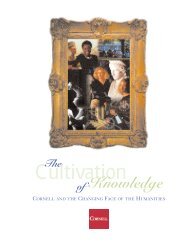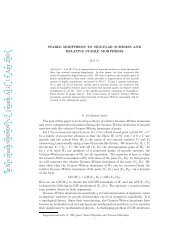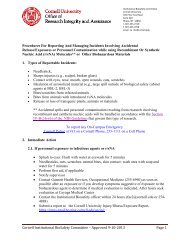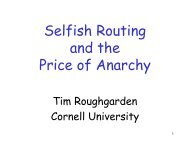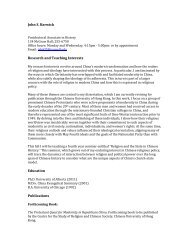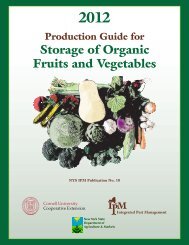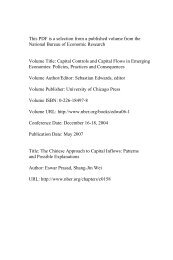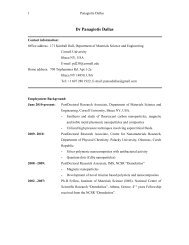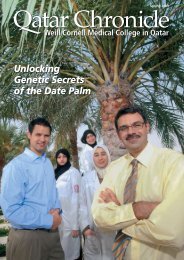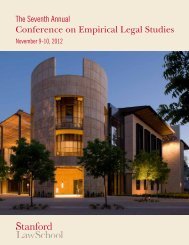Some basic results on Sturmian words
Some basic results on Sturmian words
Some basic results on Sturmian words
Create successful ePaper yourself
Turn your PDF publications into a flip-book with our unique Google optimized e-Paper software.
0 1<br />
01 10 11<br />
011 101 110 111<br />
0110 0111 1011 1101 1110<br />
01101 01110 10110 10111<br />
11011 11101<br />
011011 011101 101101 101110 110110 110111 111011<br />
0110110 0110111 0111011 1011011 1011101 1101101 1101110 1110110<br />
Figure 1: Words of uniform density √ 2/2 of length ≤ 7<br />
We draw a branch from word a down to word b if b can be obtained<br />
by appending either 0 or 1 to a. By Corollary 2 above, this tree has no<br />
terminating branches. Thus each word a 1 . . . a n in the tree is the top node<br />
of either <strong>on</strong>e or two branches accordingly as <strong>on</strong>e or both of a 1 . . .a n 0 and<br />
a 1 . . .a n 1 are in D α . If a is the top node of two branches, call it a “splitter.”<br />
From Figure 1 we see that when α = √ 2/2, the first few splitters are<br />
1, 11, 011, 1011, 11011, 011011, . . .<br />
If we understand where the splitters occur in the tree, then we understand<br />
the whole tree. First of all, notice that there is at most <strong>on</strong>e splitter<br />
of each length. This is certainly true for length zero; suppose it fails for the<br />
first time at length n. Then there is a splitter of length n − 1 (just truncate<br />
the first character from any splitter of length n) and it’s unique. Call it<br />
a 1 . . .a n−1 . Then the <strong>on</strong>ly possibilities for splitters of length n are 0a 1 . . . a n−1<br />
and 1a 1 . . .a n−1 . But these can’t both be splitters, else 0a 1 . . .a n−1 0 and<br />
1a 1 . . .a n−1 1 would both be in D α , which is impossible.<br />
3



